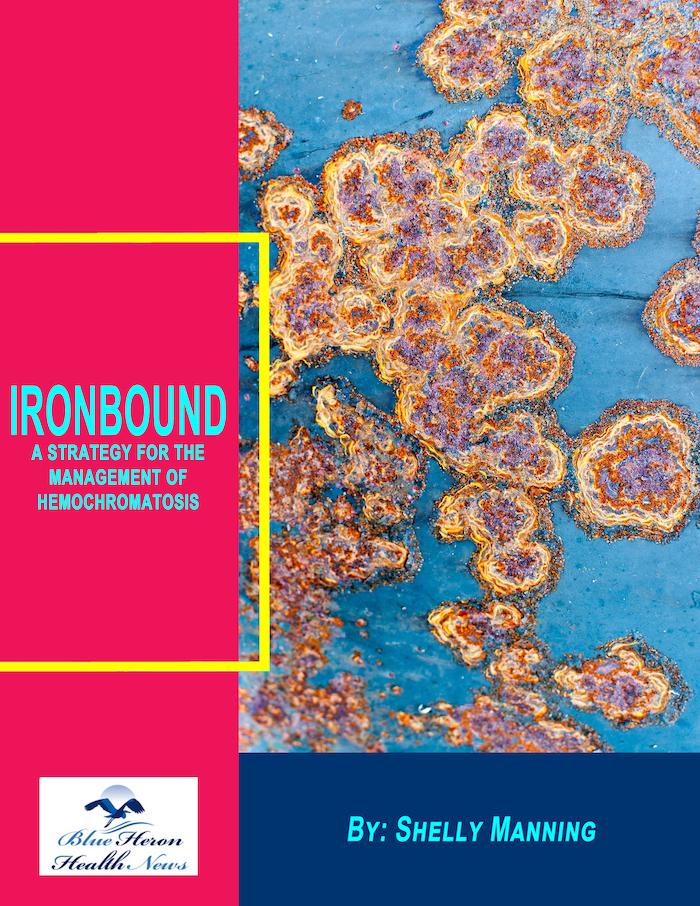Ironbound™ A Strategy For The Management Of Hemochromatosis By Shelly Manning if you are suffering from the problems caused by the health condition of HCT due to excess amount of iron in your body then instead of using harmful chemical-based drugs and medications you are recommended to follow the program offered in Ironbound Shelly Manning, an eBook. In this eBook, she has discussed 5 superfoods and other methods to help you in reducing the level of iron in your body in a natural manner. Many people are benefited from this program after following it consistently.
How is oxidized cholesterol formed in the body?
Oxidized cholesterol (also known as oxysterols) is formed when cholesterol in the body reacts with reactive oxygen species (ROS) or free radicals, leading to oxidation. This process can occur in various tissues and plays a role in various health conditions, including cardiovascular disease. Here’s how oxidized cholesterol is formed in the body:
1. Cholesterol Metabolism:
- Cholesterol is an essential lipid that is produced in the liver and is also absorbed from dietary sources. It is crucial for various bodily functions, including cell membrane structure, hormone production (e.g., steroid hormones), bile acid synthesis, and vitamin D synthesis.
- Cholesterol circulates in the bloodstream as part of lipoproteins (such as low-density lipoproteins (LDL), often called “bad cholesterol,”) which transport it to cells and tissues throughout the body.
2. Role of Reactive Oxygen Species (ROS) and Free Radicals:
- Reactive oxygen species (ROS) are highly reactive molecules containing oxygen. These include hydrogen peroxide (H₂O₂), superoxide anions (O₂⁻), and hydroxyl radicals (OH•).
- ROS are generated in the body during normal metabolic processes (like cellular respiration) and in response to environmental stressors such as smoking, pollution, and high-fat diets. They are produced by various cellular processes, including mitochondrial activity and inflammatory responses.
- Free radicals are unstable molecules that seek to stabilize by reacting with other molecules, including lipids and proteins.
3. Oxidation of LDL Cholesterol:
- The most common form of oxidized cholesterol is derived from the oxidation of LDL cholesterol. LDL particles are the main carriers of cholesterol in the blood, and when these particles are exposed to ROS or free radicals, they undergo oxidation.
- The oxidation of LDL involves modifications to the fatty acid chains and cholesterol esters in the LDL particle, producing oxidized LDL (oxLDL). This oxidized form of LDL can damage the cells lining the blood vessels, promoting inflammation and the formation of plaques that lead to atherosclerosis (hardening and narrowing of the arteries).
4. Formation of Oxysterols:
- Oxysterols are a class of oxidized cholesterol derivatives that result from the oxidative modification of cholesterol. They are formed when cholesterol molecules react with ROS or free radicals in tissues, particularly in the vascular system and liver.
- The oxidation process involves the addition of oxygen to the cholesterol molecule, creating various hydroxy and ketone groups on the cholesterol ring structure. This results in compounds such as:
- 7-ketocholesterol
- 25-hydroxycholesterol
- 27-hydroxycholesterol
- 5,6-epoxycholesterol
- These oxidized forms of cholesterol are considered bioactive compounds that can influence cellular processes such as inflammation, immune response, and cholesterol metabolism.
5. Impact of Oxidized Cholesterol:
- Oxidized cholesterol (oxysterols) has been linked to a variety of health issues:
- Atherosclerosis: Oxidized LDL can trigger an inflammatory response in the arteries, leading to plaque formation and increasing the risk of heart disease and stroke.
- Endothelial Dysfunction: Oxidized cholesterol can damage the endothelium (the lining of blood vessels), impairing its function and increasing the risk of cardiovascular events.
- Cholesterol Dysregulation: Oxysterols can interfere with cholesterol homeostasis and may contribute to the development of conditions like non-alcoholic fatty liver disease (NAFLD) or insulin resistance.
- Neurodegenerative Diseases: Oxidized cholesterol has been implicated in neurodegenerative diseases such as Alzheimer’s disease, where oxysterols can accumulate in brain tissues and promote inflammation and neuronal damage.
6. Factors Promoting Oxidation of Cholesterol:
- High-fat diets: Diets rich in saturated fats or trans fats can increase the levels of cholesterol in the bloodstream, creating more LDL particles that are prone to oxidation.
- Inflammation: Chronic inflammation, which can be caused by conditions such as obesity, smoking, diabetes, and stress, increases the levels of ROS in the body, promoting the oxidation of cholesterol.
- Environmental toxins: Exposure to pollutants, chemicals, and toxins can increase oxidative stress and, consequently, the oxidation of cholesterol.
- Metabolic conditions: Conditions like diabetes, obesity, and metabolic syndrome are associated with increased oxidative stress, leading to higher levels of oxidized cholesterol.
7. Body’s Defense Mechanisms:
- The body has natural defense mechanisms to neutralize ROS and protect against oxidative damage, including antioxidants (e.g., vitamin C, vitamin E, and glutathione) and enzymes (e.g., superoxide dismutase, catalase).
- However, when oxidative stress is excessive or the body’s antioxidant defenses are overwhelmed, the oxidation of cholesterol becomes more pronounced, contributing to various health problems.
Conclusion:
Oxidized cholesterol is formed when cholesterol molecules, particularly those carried by LDL, react with ROS or free radicals. This oxidation process produces various oxidized cholesterol derivatives (oxysterols) that can contribute to inflammation, endothelial damage, and the development of atherosclerosis. Factors such as a high-fat diet, chronic inflammation, and environmental toxins can promote the oxidation of cholesterol, increasing the risk of cardiovascular disease and other health issues. Reducing oxidative stress through a balanced diet, antioxidants, and lifestyle changes can help mitigate the formation of oxidized cholesterol and its harmful effects.

Ironbound™ A Strategy For The Management Of Hemochromatosis By Shelly Manning if you are suffering from the problems caused by the health condition of HCT due to excess amount of iron in your body then instead of using harmful chemical-based drugs and medications you are recommended to follow the program offered in Ironbound Shelly Manning, an eBook. In this eBook, she has discussed 5 superfoods and other methods to help you in reducing the level of iron in your body in a natural manner. Many people are benefited from this program after following it consistently.